Matador Network's Blog, page 1221
November 13, 2018
Winter activities in cold US cities

There’s an old expression people who live in freezing cold cities like to use. “There’s no such thing as bad weather,” they say. “Only bad clothes.”
Perhaps this is just something they tell themselves to stay warm while waiting for a bus in an Arctic wind. But if it holds true and cold places can still be fun with the right amount of layering, then lower hotel prices and smaller crowds make winter the perfect time to visit. Provided you invest in a good jacket first. From train rides through one of America’s most popular national parks to bumper cars on ice, here’s what to do in eight of our coldest cities this winter.
1. Chicago, Illinois
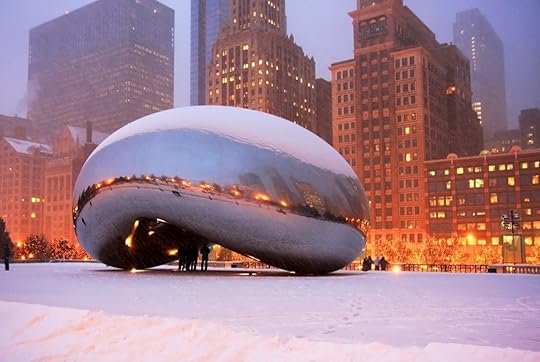
Photo: MarynaG/Shutterstock
Whenever someone who hasn’t endured winter on the Great Lakes takes a job in Chicago, their friends always snicker, “Wait ‘til they experience January.” While the icy months aren’t exactly teeming with street festivals and baseball games, they can still be a fantastic time to visit.
Other than New York City, no place in America dresses up for the holidays like Chicago. Whether you’re bundling up to stroll the holiday displays along Michigan Avenue or walking under the two million lights at the Lincoln Park Zoo, you’ll always be in the holiday spirit. The Brookfield Zoo has an equally impressive Holiday Magic celebration, with ice sculptures illuminated by more than a million LED lights.
If you want ice skating to be on your agenda, you’ve got two great options: the outdoor rink at Millennium Park (this is where layers come in) and the highest ice rink in the world at the Hancock Center.
Don’t sleep on indoor excitement here, either. The theater district is still up and running if you want to catch a holiday showing of Wicked. Or you can educate yourself at the Field Museum, Art Institute, Shedd Aquarium, and the Museum of Science and Industry with its Christmas Around the World seasonal exhibit.
2. Minneapolis, Minnesota

Photo: July Flower/Shutterstock
Want to test the limits of that whole “there’s only bad clothes” philosophy? Spend some time in the Twin Cities this winter, where despite the bone-chilling -5 degrees Fahrenheit average high in January, the best things to do are still outdoors. There’s ice climbing, which is a little like rock climbing for those who like the challenge of numb hands, and the Sandstone Ice Festival is one of the largest gatherings for it in the world. That happens January 4-6. Minneapolis also has some of the best snowmobiling sites outside of Maine, and cruising across the area’s frozen lakes at high speeds is an exhilarating dose of cold weather adrenaline.
On the other end of the thrills spectrum is ice fishing. While it’s not everyone’s definition of “exciting,” it’s absolutely a cultural experience and an entertaining way to spend a frigid afternoon. The Fishing for Ducks tournament on February 17 even carries a $20,000 prize.
Even if you’re not into challenging your body’s cold tolerance, there’s still plenty to do. Lest we forget the area is home to the Mall of America, the biggest mall in the United States that comes complete with an aquarium and Nickelodeon Universe. There’s both pro hockey and pro basketball with the Timberwolves and Wild playing all winter. You’re not too far from the SPAM Museum in Austin if you’re trying to be a little ironic. Or you can warm up in the Niagara Cave where it’s always a balmy 50 degrees Fahrenheit.
3. Boston, Massachusettes

Photo: Marcio Jose Bastos Silva/Shutterstock
Aside from distinctive accents and Cheers, Boston is really known for three things: sports, beer, and history. Fortunately, all of those are still fully accessible during winter. Though it might be too prohibitively cold to walk the Freedom Trail, you can still visit spots like Faneuil Hall, The Boston Tea Party Ships & Museum, and the Old State House — even when the wind is whipping in off the bay. If you want to sample the local food scene, head to Boston the first two weeks of March when Dine Out Boston happens. You’ll be able to hit normally inaccessibly expensive restaurants with prix fixe menus for as little as $28 those two weeks.
If you like beer, you won’t find a better city for it on the East Coast. There are fully indoor tours at spots like Harpoon Brewery, Turtle Swamp Brewing, Lamplighter Brewing Co., and Cambridge Brewing Co. Plus, of course, the requisite stop at Sam Adams. Though you won’t get to enjoy the sunshine in a spacious beer garden anywhere, you can still spend a pretty solid afternoon sampling legendary Boston beers.
The Celtics and Bruins are both playing all winter, as are the Patriots if you can tolerate their fans. If you want to engage in sports yourself, the Blue Hill Ski Area offers $25 night skiing passes, and it’s a pretty respectable resort for a spot so close to a major city center. Or you can ice skate at City Hall Plaza, then across the frozen frog pond in Boston Common.
4. Providence, Rhode Island

Photo: The Alex and Ani City Center/Facebook
Perhaps the most notable, photographed, and purely Providence event of the year is Waterfire, which is a fire-based art installation on the banks of the Providence River. Though it’s colder to walk the river path in the winter, the Christmas edition adds holiday lights for a true seasonal experience.
Aside from fire on the river, Providence is also one of only three cities in America to offer Ice Bumper Cars. Though it sounds like a bad day on I-95, this annual event at Alex and Ani City Center puts you in big, round cars that look a little like motorized inner tubes. Once inside, you get to bump, crash and generally aggravate everyone else in the rink. Basically, it’s your chance to be a real New England driver without any of the insurance premium repercussions.
The Alex and Ani Center also features an ice skating rink when it’s not being used for legal ice collisions, plus a winter festival complete with a Christmas tree lighting and winter lights market.
Providence is home to five different colleges. While the Rhode Island School of Design isn’t known for its sports programs, you can catch first-rate college basketball and hockey. Providence College, Brown University, and the University of Rhode Island all have NCAA teams.
5. Cleveland, Ohio
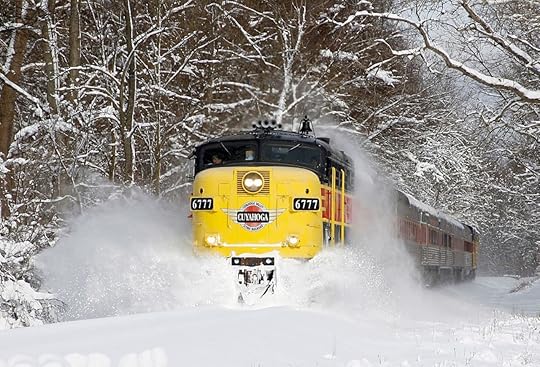
Photo: Cuyahoga Valley Scenic Railroad
Anyone who’s watched a late-season Browns game might think of Cleveland in winter as the closest thing to American Siberia. And for Browns fans, that may be the case. But for visitors, Cleveland is actually one of the more surprisingly lively American winter destinations. At the Mill Stream Run Reservation, you can rent a toboggan and hit the ice chutes at up to 50 MPH, basically the high-speed winter alternative for when the roller coasters at Cedar Point are closed.
For more traditional outdoor thrills, hit the Boston Mills/Brandywine ski resort. It’s not exactly Tahoe East, but it does offer pretty decent downhill skiing in Cuyahoga Valley National Park. If you’d like to see the park from the comfort of a heated train car, the Cuyahoga Valley Scenic Railroad can take you on a journey through the 11th most visited national park in America in new California Zephyr cars. Try to catch it on one of the special beer tasting rides.
In the city, you can play pinball to your heart’s desire at the Rock and Roll Hall of Fame’s pinball exhibit, which runs through the spring. Or hit the completely free Cleveland Museum of Art, which has a special exhibit on Georgia O’Keefe all winter. You can also hit the Jack Casino downtown if you think you can fund your trip with a few lucky pulls of the slots. Or check out the Lebron-less Cavaliers. Tickets are a little easier to come by these days.
6. Anchorage, Alaska

Photo: Sean D. Pearson/Shutterstock
Going to see the northern lights is often an exercise in both one’s tolerance of cold and tolerance of boredom. While the lights are beautiful, they’re also often best seen from remote locations where there’s not much to do other than… watch the northern lights. Not the case in Alaska’s largest city, where the aurora borealis is visible through much of the season. Arctic Light and Great Land Adventures can take you on quick overnight excursions out of the city.
Once you’ve knocked the Aurora off your bucket list, you’ll have plenty to fill the rest of your trip. Anchorage is surprisingly temperate in the winter with daily highs near 20 degrees Fahrenheit, making for tolerable fat tire biking through the trails around the city. The nearby Alyeska Resort offers spectacular downhill skiing, plus a New Year’s downhill torchlight parade that’s one of the coolest NYE spectacles in the country.
Later in the winter, the Iditarod sled dog race runs the last week of February into the beginning of March, and even if you’re not planning to mush you can still enjoy the Rondy Festival that engulfs the city. Winter is also still high time for flightseeing and helicopter tours, and if you’d like to land on a glacier without any other tourists to mess up your pictures, winter in Anchorage is the time to do it.
7. Buffalo, New York

Photo: Jay Ondreicka/Shutterstock
Nothing quite warms your soul like a giant plate of spicy wings on a frigid winter night, and nowhere will you find warm, comforting food like you will in Nickel City. Though no one here will talk up its winter months, Buffalo makes the most of its snow-packed season by offering stuff like the Ice at Canalside, a 32,000-square-foot skating rink right on the shores of Lake Erie. You can rent ice bikes and seamlessly pedal along the canal, assuming the winds aren’t blowing too hard.
Ever wanted to try curling? Even know what curling is? It doesn’t matter! The sport is best described as team shuffleboard on ice, and it’s a winter favorite that you can try at Ice on Canalside. Or you can just rent a pair of ice skates like a normal person and enjoy the frigid western New York weather.
The Buffalo and Erie County Botanical Gardens present a nightly light show in late January and early February, in which the three glass domes light up in bright colors under the silver winter sky. Winter is also the perfect time to take a side day trip to Niagara Falls. While you won’t be able to take a boat out on the river, the mist freezes on the trees surrounding the falls, making for an eerie winter wonderland.
8. Detroit, Michigan

Photo: Suzanne Tucker/Shutterstock
The holiday season in Detroit is festive, starting with America’s Thanksgiving Day Parade traipsing through downtown. The Fox Theatre hosts a Radio City Christmas Spectacular with the Rockettes, and you can peep one of the best holiday lights displays in America at the Wayne County Lightfest.
Even once the holidays are over, Detroit winters can be a great time. The city’s suburbs throw big winter festivals through most of January, most notably the Rochester Fire and Ice Festival, which has nightly fireworks displays, ice carving contests, and a tube sled run. Not to be outdone, the Plymouth Ice Festival has a dueling chainsaws competition and interactive ice carvings.
Detroit is also chock-full of parks with frozen lakes, creating an entire city of free public ice rinks. Campus Martius Park also has a winter rink, if you want to skate in an urban atmosphere. The Pistons and Red Wings are playing, the zoo is open all winter, and if you head out to the Great Lakes Crossing Outlets you can hit the Sea Life Michigan Aquarium and Legoland Discovery Center Michigan in between shopping for socks and underwear. 

More like this: 11 of the coldest places on Earth and why they are worth visiting
The post What to do in America’s 8 coldest cities this winter appeared first on Matador Network.

How to haggle like a pro abroad

One of the most intimidating parts of going to a market in a foreign country, especially one where you don’t speak the language, is the fear of getting swindled by a crafty merchant — no one wants to vastly overpay for a worthless trinket. If you’re not used to haggling for goods at home, browsing a market can be quite disorienting. It may seem like everyone’s out to scam you or take advantage of you because you’re a foreigner, but the truth is that haggling is simply expected in many parts of the world. Here are a few rules to remember for you to get a good deal abroad.
1. Know the value of what you’re buying.
This is true of shopping at any store, anywhere in the world, but you should always have a sense of the item’s value before engaging in negotiations. Consulting guidebooks, other travelers, or observing fellow patrons can give you an idea of what you should expect to pay. If the seller proposes an insanely high price, you’ll be immediately aware and can counter accordingly. This also means having a thorough understanding of exchange rates, so you’re not standing there doing math in your head. If you’ve done your research and are thoroughly informed, the seller will sense this and be more likely to give you a fair price.
2. Be polite.
This is a rule you learn in preschool, but it’s still highly applicable. It’s natural to approach the merchant with the item you want and immediately start talking price, but some idle chatter can go a long way. Bring levity to the negotiation, and the seller will probably appreciate it. Don’t take the interaction too seriously. Smile, be friendly, attempt to speak their language, and shopkeepers will be more disposed to give you a good deal — or at least not rip you off.
3. Don’t act on emotion.
It’s easy to get frustrated while haggling. Whether a language barrier makes communication difficult or the merchant keeps insisting on a price you deem unfair, always maintain an even-keeled demeanor. If you appear desperate or impatient, it shows the shopkeeper that you place a high value on the item and are likely to spend a bit more. Being rude or aggressive isn’t “standing your ground” — it’s off-putting and will only make the merchant drive the price higher or cease negotiations altogether. Remaining calm, projecting an air of indifference, and not showing your stress will put you in a stronger negotiating position.
4. Don’t reveal your budget.
If you tell a shopkeeper you’re only willing to spend $100, and that’s your absolute limit, guess how much you’re going to spend — $100. Always start your asking price significantly lower than what you’re actually willing to spend. Merchants expect you to ignore their initial (often absurd) offer and counter with something much lower.
It’s also worth paying attention to how you dress. If you’re a tourist traveling through a souk in Morocco, it’s probably a bad idea to wear expensive jeans, Ray-Bans, and a designer handbag while taking selfies on your iPhone X. If you look like you have money, it probably means you do.
5. Be prepared to walk away (and then do).
The merchant has a great deal of power in a negotiation. After all, they own the item and can decide whether or not to part with it. But you have something even more powerful: the ability to walk away. Remember, they want your business. By showing you’re prepared to walk away, you’re playing the most powerful card in your deck. Walk away, and one of two things may happen. The merchant may simply let you go, which means you were never going to get the price you wanted anyway. Or he may chase after you, desperate not to lose a sale.
In Jerusalem, I was at a bazaar with a friend who was looking for a necklace for his girlfriend. The asking price was $160, but my friend had no intention of paying it. He offered $30, an offer that the merchant refused. He offered a “discount” of $155, then $150, but my friend — a more astute negotiator than I would have been — simply shook his head and walked away. The shopkeeper ran after us. “$120!” he shouted. “$100! $80! $75!” We were fifty yards away now, but he was still chasing us through the narrow market. Eventually, they settled on $60, shook hands, and both walked away smiling. 

More like this: Sustainable alternatives to the most unethical souvenirs
The post 5 tips to haggle like a pro abroad appeared first on Matador Network.

Best things to see in Uzbekistan

You might think the only way you’d ever end up in Uzbekistan is one of those throw-a-dart-at-a-map maneuvers. Think again. Long dormant in the travelsphere, Uzbekistan is slated to become a magma-hot Central Asian destination over the next few years. It’s easy to see why: Islamic architecture dressed in blue-green tiles rises up over the sandy historic centers of millennia-old cities, once the crown jewels of the Silk Road. Get a head start on discovering the mosques, minarets, and mausoleums that Uzbekistan has in store with these seven unmissable sights.
1. Samarkand
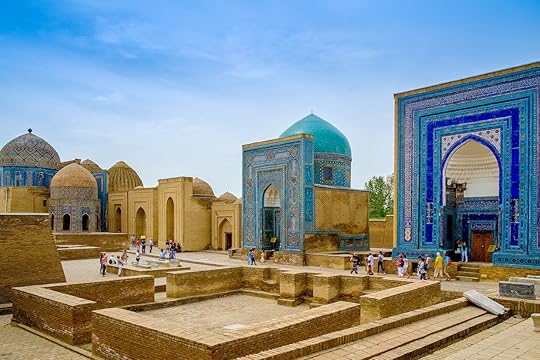
Photo: Evgeniy Agarkov/Shutterstock
Continuously inhabited for over two and a half millennia, Samarkand is so full of antiquities that its whole historic center is one great big sight. The ancient city helps bridge China and the Mediterranean, making it a magnet for traders during the days of the Silk Road. Daily life in ancient Samarkand revolved around Registan, a square that now bustles with tourists rather than trade activity. Mosaicked madrasas, or Islamic religious schools, dating back to the 15th and 17th centuries bound the plaza on three sides, helping the old city score UNESCO recognition in 2001.
Heading northeast from Registan, you’ll come across the heavily ornamented tombs of the Shah-i-Zinda necropolis and the Bibi-Khanym Mosque with its geometric, blue-and-white-tiled facade. Traveling in the opposite direction will lead you to the fluted, turquoise dome of the Gur-e-Amir Mausoleum, the resting place of Amir Timur, the first and feared ruler of the Timurid dynasty. Samarkand can be toured comfortably in two days or quickly in one. For the best weather and least chance of crowds, visit between late September and early October.
2. Bukhara

Photo: Evgeniy Agarkov/Shutterstock
Like Samarkand and Khiva, Bukhara was a trading hub in the Silk Road era. Its historic center houses more than 100 ancient Islamic monuments, earning it a UNESCO designation in 1993. Start your self-guided tour at the Ark of Bukhara, a fifth-century fortress that once cordoned off royal residences and now houses various museums. Then visit the Samanid Mausoleum, which was completed during the 10th century and is thought to be the oldest surviving example of Islamic architecture in Central Asia.
Replenish with a samsa, an Uzbek samosa, from a street cart before stopping for tea at Lyabi-Hauz where you can admire religious structures flanking one of the last public ponds, or hauz, in Uzbekistan. End the day with a trip to the Poi-Kalyan religious complex to study the blue-tiled facade or visit the Chor Minor Mosque and its turquoise-capped towers.
3. Itchan Kala

Photo: Iryna Hromotska/Shutterstock
Itchan Kala is the fortified inner city of Khiva, the last stop on the Silk Road in Uzbekistan for caravans traveling west from China. Around 50 monuments, including the must-see Djuma Mosque, and 250 former homes occupy the walled city. The earliest structures date back to the 10th century while the majority were constructed in the 18th and 19th centuries. Everything in Itchan Kala is impressive, even the gates and walls themselves, which tower more than 30 feet in the air and feature crenelated designs. Still, the sight is most astounding as a composite, representing one of the oldest unbroken walled cities in Central Asia.
4. Fergana Valley

Photo: eFesenko/Shutterstock
Silk Road traders traversed the Fergana Valley to get between western China and Samarkand. Cradled by the Tian Shan and Gissar-Alai mountain ranges, the valley has a long and often turbulent history given its position between multiple Central Asian borders and widespread ethnic diversity. The landscape is beautiful, moving between grassy hills and mountain passes, but the man-made additions to the valley make the larger cities well worth visiting.
One example is the Khudayar Khan Palace in Kokand, a massive palace erected on citadel ruins and decorated inside and out with tiles stained every shade of blue and green. Kokand also makes a great base for those looking to spend a few days exploring the Fergana Valley with several accommodation options available.
5. Amir Timur Museum

Photo: eFesenko/Shutterstock
Turco-Mongol warlord Amir Timur ruled over Central Asia during the 14th century, ushering in the Timurid dynasty with a barbarous, militaristic zeal. Best known for his conquering ways, Timur also had a soft spot for art and architecture and is largely responsible for the historic monuments visitors descend on Uzbekistan to see today. This museum in Tashkent displays portraits, murals, military relics, astronomical instruments, and more from the Timurid Empire. The interior is richly decorated, and the museum itself is hard to miss. Just look out for the bright blue cupola near Amir Timur Square.
6. Ak-Saray Palace

Photo: eFesenko/Shutterstock
Like most ancient rulers with an unquenchable thirst for power, Amir Timur had equally grandiose visions for his palatial estates. Perhaps his most ambitious undertaking was the Ak-Saray Palace, or White Palace, built in his birthplace of Shakhrisabz. Construction on the palace started in 1380, though little of the resplendent estate remains. Visitors can admire the grand, crumbling entryway, which still towers more than 100 feet over the city, proudly displaying what’s left of its mosaics and painted pottery. Don’t be surprised if you see tufts of white tulle in the background of your photos; the UNESCO-protected palace is a popular spot for locals to pose for wedding photos.
7. Chorsu Bazaar

Photo: NICOLA MESSANA PHOTOS/Shutterstock
Tashkent is going through a bit of an identity crisis with its odd mix of Soviet-era apartment buildings and newly erected high rises. Where the city really shines is its Old Town, a pocket of the Uzbek capital committed to preserving the ancient Central Asian aesthetic and a more traditional way of life. One example is the Chorsu Bazaar. The green-domed marketplace sells everything from spices and dried fruit to ceramics and jewelry while also serving as social hub in Old Town. It’s the perfect place to do your souvenir shopping, try some traditional Uzbek flatbread, or settle in for some people-watching at a chaikhana, or tea house. 

More like this: Central Asia is the next big trending destination. Here’s why.
The post 7 sights that make Uzbekistan a must-see Central Asian destination appeared first on Matador Network.

20 locals' secret spots in the US

20 ways you can enjoy America’s biggest cities like a local
Photo: Pixabay
There’s nothing sexier than traveling adventurously. Traveling local. Traveling cheaply. Traveling green. And you certainly don’t get this by hopping on a flight to some ritzy international destination or spending a week on a beach-y resort.
You do it by hopping on the Greyhound and booking it to the nearest big city. America’s largest urban centers have laundry lists of local secrets to uncover, and most of them come without the lines, the price tags, and the expectations. We’ve sought out 20 for you — all you have to do is get packing.

This post is proudly produced in partnership with Greyhound.
1 —
Dream House
New York, NY
Photo: ©Jung Hee Choi / Mela Foundation
It almost doesn’t come as a surprise that sound and light might behave strangely in New York City. At least, this is the case at La Monte Young and Marian Zazeela’s Dream House, where every move you make shows you a different sensory world.
Wander up to the third floor (it’s above a restaurant), and you’ll be ushered right in. It’s definitely a house, but likely not one that fits your standard definition. Once inside, make sure to be silent. Make sure to make noise. Move slowly. Move quickly. Unfocus your gaze. Refocus it. Stand in the middle; stand in the corners. Notice how you’re experiencing sound and light as one. Or are you? And is this theatre, art, or something else entirely?
2 —
The Last Bookstore
Los Angeles, CA
Photo: James Martinez / The Last Bookstore
The Last Bookstore is the name, but maybe it’s also a prophecy. Brick and mortar book storefronts are dinosaurs before the meteor, but this one — not far from LA’s Little Tokyo — is nostalgia for a generation, and it doesn’t appear to be going anywhere.
As you explore its 22,000 square feet, you’ll meander between hallways of used books, vinyl, and art, to hang-out spaces, a yarn shop, and an artists’ workshop and gallery. You might also stumble on an event — like the “We’re all gonna die!” dystopian book club or True Crime Tuesday — or a talk on dysentery on the Oregon Trail, feminism, or vegan Christmas. They’re open till 11pm on Fridays and Saturdays, so scope out their reviews and get to book learnin’. (Or vinyl-hunting. Or Oregon Trail-ing. Whichever.)
3 —
Chicago Cultural Center
Chicago, IL
Photo: Sharon Mollerus
Brilliant, rainbow-colored, and ornate are rarely three words used together to describe Chicago architecture, but that’s only when you’re not talking about the Chicago Cultural Center. Built in 1897 across from Millennium Park, its interior is stuffed to the brim with green-veined Vermont marble, doric columns, mosaic floors, mahogany doors, and — the pièce de résistance — the largest Tiffany glass dome in existence.
So look up. You’ll probably piece together that it depicts the zodiac, but what’s less obvious is the thing was built for a cool $2 mil. Nowadawys? The dome is valued at $35 million. And in the Grand Army of the Republic Hall, there’s another one. It’s smaller, but come on, two giant Tiffany glass domes in one place? Talk about a gilded age!
4 —
Downtown Tunnels
Houston, TX
Photo: Ed Schipul
You could wander every inch of Houston and still miss six of its miles, linking 95 city blocks. It’s not the twilight zone or some kind of vortex (sadly) — we’re talking about the city’s underground tunnels.
Enter at the Wells Fargo Plaza or in the McKinney Garage on Main Street, and start scoping out your options. The tunnels originally only connected two movie theaters (today, you can wander around below many points in the Arts District), but now there are hundreds of shops and restaurants to pop in and out of. If you get lost, know that every leg of the tunnel system is decorated slightly differently to help you navigate — the zealous signage also won’t let you down.
5 —
Fishtown
Philadelphia, PA
Photo: Peetlesnumber1
It may technically be in Philadelphia, but some consider it NYC’s next borough. Half sketchy and reeking of cheesesteak, half million-dollar price tag, Fishtown is making pun-intended waves. Beyonce’s birthday cake? Right here. The best pizza in the country? Right here. Wine bars and music galleries, graffiti and grit? Here too. Not so long ago it was a working-class neighborhood (you don’t get a moniker like Fishtown without earning your blue-collar stripes); now it’s hotter than fidget spinners in 2017.
It does a million things well (as any artsy, new-wave neighborhood usually does), but one of the things it does best? Coffee. Check out ReAnimator, Milkcrate, Rocket Cat, or La Colombe. It won’t be this way much longer, but if you get there soon, those will be locals you’re chilling next to.
6 —
Torrey Pines State Reserve
San Diego, CA
Photo: Tony Webster
In California, the green spaces don’t have to ring large with names like “Yosemite” — even the local parks and preserves will knock you off your rocker. Just north of San Diego and right off the 5 is one such spot: Torrey Pines State Reserve. Let’s just say oceanside trails, dolphins, and bobcats are quite the merry trio.
One of the local secrets here is the La Jolla Trail and the hike down to Black’s Beach (known for its reputation as a nude surfer spot). It’s on the super southern tip of the reserve, closest to the city. There are awesome views if you decide to go up, awesome views if you decide to go down, and the trail is always only wide enough for one person — which, luckily, is usually plenty.
7 —
Straw
San Francisco, CA
Photo: Ana Dahl / Straw
Carnival-inspired comfort food. We shouldn’t technically have to say more, but the formatting on this webpage requires it. Straw is the kind of restaurant you don’t want super close to your house — otherwise you’ll struggle to arrive at work not in a mimosa or chicken-and-waffle stupor.
That is, if you can get in. It only seats a couple dozen people, and the place is almost always packed through lunch (because it’s not open for dinner). Donut burgers — Google them — tend to be quite the draw for anyone and everyone, including locals who can’t get enough of their weirdly sophisticated county fair flavors.
8 —
Kurt Vonnegut Museum & Library
Indianapolis, IN
Photo: Kurt Vonnegut Museum & Library
Kurt Vonnegut — you probably know his Slaughterhouse-Five, if nothing else — was Indianapolis born and raised. He passed away in 2007, and in 2011, the city opened the Kurt Vonnegut Museum & Library in his memory.
Here, you can eye Vonnegut’s typewriter, check out his rejection letters, critique his doodles, and — simply by visiting the museum — fight the good fight against censorship. Vonnegut was an incredibly principled man, and the museum actively supports the causes he cared so deeply about.
Note: If you find yourself in Indianapolis in early November, check out VonnegutFest. It’s the only Vonnegut celebration in the world, and it takes over the city as a challenge to “better us as individuals and as a society.”
9 —
Franklin Park Conservatory and Botanical Gardens
Columbus, OH
Photo: Kate Liebers / Franklin Park Conservatory and Botanical Gardens
When a conservatory has a food truck, you know you’re in uncharted terrain. Grab whatever garden fare you’re craving, and then surround yourself with a thousand butterflies, grow virtual flowers on your body at the immersive and technological Field exhibit, and catch the light show at the John F. Wolfe Palm House at dusk. The Franklin Park Conservatory is a strange melange of wonderful, and we haven’t even mentioned the flowers yet.
There are dozens of attractions here (the new children’s park is uh-mazing), but the one you have the most potential to get lost in is their 88-acre botanical garden. Between light shows and techno displays, head here for some serious zen, just a few minutes east of the city’s downtown heartbeat.
10 —
Brook’s Sandwich House
Charlotte, NC
Photo: Dale Haas
You’ll find very few food entries gracing this list, and that’s because we wanted to save the spotlight for — drum roll, please — livermush.
You’d think someone would’ve renamed it by now — it’s similar to Philly’s more innocuously named scrapple — but for those who are fans, the evocative (and true-to-form) name doesn’t matter. Pork liver, scrap meat, spices, and cornmeal makes up this ultra-Southern dish, and there’s no better place to try it than Charlotte.
Mash it up with your morning grits and eggs (cheese grits is always the way to go) or, hell, use it as the ultimate pizza topping. At Brook’s Sandwich House, you’ll get it between two slices of bread with chili, mustard, and onions — tossed at you in a bag, the way it’s always been and the way it always should be.
11 —
Jones Point Lighthouse
Washington, DC
Photo: Wikimedia
Most tourists, when they visit DC, hit up the famous monuments. You know the drill: Jefferson, Lincoln, whatever’s on the backs of our coins. But the oldest federal monuments in the city aren’t any of these buildings — they’re the boundary stones placed at the edges of the district over 200 years ago.
Way back in the 1790s, surveyors laid stones to delineate the DC “diamond,” and most of these stones (36!) can still be found today. The first one ever laid can be spotted in one of the sea walls at the Jones Point Lighthouse, with an inscription that reads “The beginning of the territory of Columbia” on one of its sides. Once you’ve found the stone (there’s a handy marker), stick around for some area history and to scope out the lighthouse. It’s the last remaining one of its kind in the state.
12 —
The Mapparium
Boston, MA
Photo: Chase Elliott Clark
If you’ve ever wondered what the planet actually looks like from space, you’ll never truly know until you hitch it to Boston (unless you rub elbows with Elon, of course). The Mapparium, at the Mary Baker Eddy Library, is the only place you can see our planet without any distortion. It’s essentially a three-story-tall globe with a walkway through its middle — and it’s from this perspective that your eyes are equidistant to all spots on the globe, showing you reality. And get this: You won’t much recognize it. (No, it’s not flat.)
Apart from its geographical awesomeness, it’s also a whispering gallery. Keep it low, and with your voice bouncing off 360-degree glass walls, everyone at any position in the room will still be able to hear you loud and clear.
13 —
The Heidelberg Project
Detroit, MI
Photo: Marshall Skeeters / The Heidelberg Project
Thirty years ago, Heidelberg was a nondescript, run-down street on Detroit’s east side. It was quite literally in shambles, on the edges of becoming entirely abandoned. Then artist Tyree Guyton came around and saw something different. Over time, he turned these vacant lots and dilapidated houses into street art. This is the Heidelberg Project.
The entire McDougall-Hunt neighborhood has been transformed thanks to his (and his family’s) efforts. Though it took awhile for city officials to sign on, the nonprofit now has city headquarters and an app. Though to catch the project in its current glory, move quickly — it’s slowly being dismantled and re-envisioned into Heidelberg 3.0.
14 —
Radnor Lake State Natural Area
Nashville, TN
Photo: Michael Hicks
Radnor Lake State Natural Area has one pretty great claim to fame: It’s the largest swath of wilderness on the skirts of a major US city. These 1,200+ acres just south of downtown Nashville have quite the resume, but locals tend to come for three specific things: the excellent canoeing, the wildlife, and the stellar scenic trails.
For an easy morning outing out of the city (but just barely!), hit the Radnor Lake South Lake Trail. For something more difficult and just as entrenched in nature, check out the Radnor Lake Ganier Ridge Trail. Both will take you through dense terrain with an owl or two — or maybe a “rafter” of turkeys — watching over you from time to time. Country music in your headphones optional.
15 —
Sweet Auburn Historic District
Atlanta, GA
Photo: Will P
Veer just off your downtown path and you’ll quickly find yourself walking along the streets of the Sweet Auburn Historic District. MLK Jr. took his first steps in this neighborhood, back when it was segregated. Now? Now it’s a National Historic Landmark District.
The stops you could make here could take you an entire trip: The Royal Peacock Club has hosted the likes of B.B. King and Gladys Night. The Sweet Auburn Curb Market is home to 10 of the entire city’s most popular restaurants. Edgewood Avenue has some of the best street art you’ll ever see. The proliferation of music venues and eateries is out-of-this-world. But the mandatory stop is MLK Jr.’s birth home, and three miles away — connected by streetcar — is The Center for Human and Civil Rights.
16 —
Vicky’s House
Miami, FL
Photo: Valerie Lopez / Vicky’s House
When life gets you down, there’s only one medicine that’s a tried-and-true cure-all: the milkshake. But not just any milkshake — at Vicky’s House in Miami, your dessert takes you straight back to the ’80s. This milkshake bar and tasting room is laboriously themed like the owner’s mom’s kitchen from the Reagan Era, down to the spices lining the wall rack.
All the milkshakes are ’80s-themed as well — you can order an “E.T. Goes To The Movies to watch The Goonies,” which is a salted caramel milkshake with a chocolate frosting rim, caramel popcorn, Cola Gummies, whipped cream, Hershey’s chocolate syrup, Reese’s pieces, and a fun-size Baby Ruth. They have killer Cuban coffee and wine and beer as well.
17 —
New Orleans Historic Voodoo Museum
New Orleans, LA
Photo: Peter Burka
Voodoo doesn’t mean fancy beads and creepy dolls. It’s a whole culture, and New Orleans Voodoo is its own variety. Besides, you can’t spend your entire visit sugar-dusting your face with beignets (though we would if we could). Pay homage to the city’s history with a visit to the small, packs-a-punch New Orleans Historic Voodoo Museum — and chat up the onsite voodoo priest if you can.
While here, definitely peruse the walls and check out the artifacts, but also be sure to come home with a souvenir. Their “love potion” is always worth a shot, though the snake skins and chicken feet serve important purposes, too.
Note: The museum also offers walking tours in the nearby St. Louis Cemetery, where famed Voodoo practitioner Marie Laveau rests.
18 —
City Museum
St. Louis, MO
Photo: Jon DeJong
Calling it a museum is a disservice, really. St. Louis’ City “Museum” is an interactive playground for adults (and kids) made up of repurposed architectural and industrial objects found within the city limits. In some places, that would mean old street signs and barbed wire — here, that means bridges, chimneys, and abandoned airplanes.
It’s 600,000 square feet of surrealist funhouse meets playground meets architectural wonder. The rooftop has an incredible view and plenty of greenspace (including fountains!), while other floors contain aquariums, a marble bar, a skate park, and even a circus ring. You’ll have to have a keen eye to find the building, however — it’s cleverly disguised with a school bus coming out of its roof.
19 —
Old Louisville
Louisville, KY
Photo: Stephanie White
Romanesque. Neo-Gothic. Beaux-Arts. Italianate. Victorian Gothic. Classic Revival. Old Louisville is the third-largest historic district in the United States, coming in at around 48 city blocks. It’s also got the most pedestrian-only streets in the entire country. In other words, this city is built for a slow wander on foot, cell phone silent and tucked away.
Oddly enough, Old Louisville falls about a century short of downtown Louisville, but it’s largely escaped demolition through the decades. Check out the area around St. James Court, South 3rd Street, and the Victorian-age courts around 4th. Otherwise, guided tours take place from Historic Old Louisville Visitors Center twice a day, Tuesday through Saturday.
20 —
The Horse
Baltimore, MD
Photo: Dean Beeler
Baltimore’s old enough to have a dozen different threads of history, and one that’s still clinging to brick façades and crouching in dark saloons is Prohibition. The “Vote Against Prohibition” sign on the corner of Shakespeare and South Broadway is one of the clearest marks of the passage of time — and just how different our present day is.
Find it, and then go for a legal drink at The Horse to toast the 21st amendment. This spot’s full, non-local name is The Horse You Came In On Saloon, and it’s been operating in some form for well over 200 years. It’s the oldest bar in Baltimore, the only one that existed during Prohibition, and it also claims to have served good ol’ Edgar Allan Poe his last drink.

This post is proudly produced in partnership with Greyhound.
The post 20 ways you can enjoy America’s biggest cities like a local appeared first on Matador Network.

November 12, 2018
The best outdoors gifts for the right price from REI’s massive sale
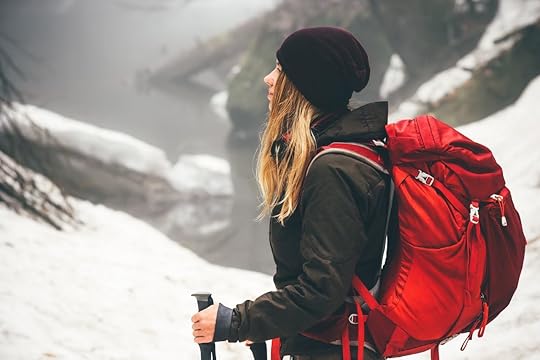
The best present you can give is the chance to get out into the great outdoors. A gift that can be used time and time again — especially somewhere where it’s beautiful outside — is unique and will be appreciated for years. The time to find those fabulous gifts is now through November 19th, from REI’s Gear Up Get Out Sale. Here are our favorite steals for the season.
Gifts under $15

Photo: REI
At $7.39, this REI Logo Lightweight Beanie costs a lot less than a box of holiday chocolates. It also comes in 11 colors, so you can pick one up for everyone at the office.

Photo: REI
Is your co-worker a caffeine addict? Do they leave paper cups all over the place? Help them cut down on their carbon footprint with a REI Stainless Steel 16 ounce Vacuum Mug, now only $11.39.
Gifts under $30

Photo: REI
With too many people packed into one ski condo and coin-operated washing machines down the hall, you’re bound to lose a ski sock or two along the way. So stock up on the highest quality socks while they’re on sale, which is right now. All Smartwool footwear is under $30. The PhD Pro Free Ski Socks are $20.89, or you can pick up a two-pair set of Dazzling Wonderland Socks for $27.89.

Photo: REI
Outdoor Research has screaming deals on UV-protecting sun hats, sports caps, winter beanies for men, and women’s cozy caps. Everything is 30 percent off and well under $30.

Photo: REI
The Ultimate Survival Technologies Heritage Camp Lantern looks like your traditional camp lantern, but it actually uses LED technology, blasting out 1,000 lumens and lasting up to 10 hours on one battery. You can blaze it on white light when you really need it, then opt for a warm golden glow or even a candle flicker for that old-fashioned camping vibe. And right now it’s half-off, at $29.89.

Photo: REI
Keep your loved one safe on their cycle with this Cyglolite Zot 450 USB Front Bike Light, only $29. In fact, all Cyglolite products are 25 percent off.

Photo: REI
It’s all well and good to get a backpack that fits a hydration bladder. But you’ve got to add that bladder. MSR’s Dromedary and DromeLite bags offer BPA-free, high-capacity water storage, and they’re all 25 percent off. The MSR DromLite 6 Liter bag is $24.69.

Photo: REI
When it comes to little kids, a cold skier is an unhappy skier. Avoid the teary wimpers and the need to bribe your kid with hot chocolate after every run. Keep them toasty warm with Terramar base layers, which are all under $30.
Gifts under $50

Photo: REI
All prAna yoga apparel is at least 25 percent off. Considering that prAna’s good-looking clothing is already at a great price point, you’re talking some serious deals. The prAna Path Top — only $44.73, down from $69 — is so cute you’ll probably decide to wear it on your winter escape to Mexico rather than gift it to your yoga-loving friend.

Photo: REI
While you normally can’t put a price on foot comfort, it turns out that you actually can. It may make an unusual holiday gift, but it’s a lot easier to give than a foot massage. All Superfeet insoles are on sale. The Superfeet Trailblazer Hiking Insoles are $39.89, while the Superfeet Berry All-Purpose Cushion and Support Insoles are $43.89.

Photo: REI
Patagonia quality is always worth it. When it’s 30 percent off, it’s irresistible. Surprise your friend with these Patagonia Nine Trails Crop Tights, which are perfect for running and only $47.93.

Photo: REI
All Screeline Technical Pants are majorly discounted. These classic water-repellent pants are comfortable with their breathable four-way stretch, provide 50 UV protection, and have plenty of convenient pockets. The Women’s Screeline Technical Pant is only $28.83, down from $84.95.
Gifts under $75

Photo: REI
Ski season is around the corner, and there’s no better gift than a good pair of ski gloves. These Outdoor Research Arete Gloves have breathable Gore-Tex inserts, handwarmer pockets, carabiner hooks, and over-the-wrist protection from the elements. And they’re only $73.49, down from $98.

Photo: REI
Smith goggles for $67.99? Get out! The Smith Squad Goggles have an abrasion-resistant Carbonic-X lens, anti-fog treatment, full percent UV protection, and are well vented. Yep. These are the real deal. (In fact, all Smith goggles are on sale, so check them out!)

Photo: REI
You don’t really know how much you need those poles until your feet are blistered, your knees are aching, and you’ve got a steep downhill stretch head of you. You can’t give a better gift to your own self this holiday season than high-tech trekking poles from Leki, all 25 percent off. These Leki Legacy Trekking Poles are $74.89.
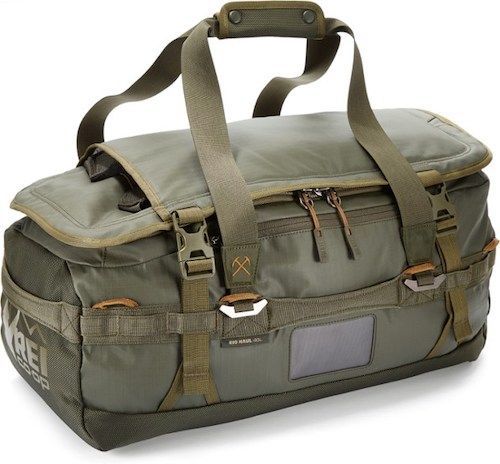
Photo: REI
The REI Big Haul 40 Duffel carries 40 liters and comes in multiple colors. And right now it’s $62.89.

REI Big Haul Duffel
Sometimes, when you’re on a bike, you really want easy access to your stuff. And you can’t get easier access than having it right at your handlebar. The Ortlieb Accessory Pack Handlebar Bag is only $56.19. Ortlieb is one of the premier makers of bike bags and paniers, and right now, their products are all 25 percent off. 
Matador’s “What to pack” team works with top brands whose values we believe in and we scour the internet to bring you the best deals on gear. When you buy the products we’ve reviewed, we earn a small affiliate commission.

More like this: The best gifts for the outdoor lover in your life are on sale at REI right now
The post The best outdoors gifts for the right price from REI’s massive sale appeared first on Matador Network.

Most beautiful ceilings in the world

Every traveler knows to keep their eyes wide open when visiting a new place, but some spots require that you be extra curious and crane your neck to look up. From mosques to churches to temples — religious buildings are often constructed to inspire visitors to cast their eyes heavenward — and even castles and more, these are the most jaw-dropping ceilings you can ever hope to have above your head.
1. Nasir al-Mulk Mosque — Shiraz, Iran

Photo: Fotokon/Shutterstock
One of the most stunning buildings in the world in every regard, the ceiling of the Nasir al-Mulk Mosque is no exception. Emblazoned with vivid patterns in every color and intricate muqarnas (ornamented vaulting), the mosque’s interior offers a daily vibrant kaleidoscopic light show through incredible panes of stained glass. The complex ceiling design, typical of Islamic architecture, draws the eyes upward and inspires a sense of awe and wonder in all who have the opportunity to view it.
2. Sistine Chapel — Vatican City

Photo: JurateBuiviene/Shutterstock
The ceiling of the Sistine Chapel in Vatican City is one of the most famous in the world. Created by Michelangelo in the early 1500s, the hand-painted masterpiece draws millions of visitors each year. The ceiling depicts nine scenes from the Book of Genesis — including the “Creation of Adam,” with God reaching out to touch Adam’s finger — capstoned by a fresco of the Last Judgment to complete the biblical story. If you go, don’t plan to document your visit because photos are strictly prohibited inside the chapel in order to protect the integrity of the art for generations to come.
3. Sultan Ahmet Mosque (Blue Mosque) — Istanbul, Turkey

Photo: GTS Productions/Shutterstock
Nicknamed the “Blue Mosque” for its striking cool-hued interior, Istanbul’s Sultan Ahmed Mosque is a historic mosque dating back to the early 1600s. It’s located next to the famous Hagia Sophia. Lined with over 20,000 handmade tiles, the mosque culminates in colossal circular stained-glass windows and in cupolas so intricately adorned that you’ll want to lie on your back for a little while to take all its splendor in.
4. Castello di Sammezzano — Florence, Italy

Photo: Reflex Life/Shutterstock
Sammezzano Castle in Florence is one of the most colorful buildings in the world. Fanned with peacock-style rainbows of color and intricate details, the castle has 365 rooms — one for every day of the year — all adorned in an elaborate swirling and otherworldly technicolor style. It was built in the early 1600s as an Italian palazzo, served as a luxury hotel after World War II, and was recently sold to a Dubai-based company for over $18 million.
5. Church of the Savior on Spilled Blood — St. Petersburg, Russia

Photo: Art Konolovalov/Shutterstock
Elaborate and colorful from the outside in, St. Petersburg’s Church of the Savior on Spilled Blood is one of the most beautiful churches in Russia and one of the most visually striking architectural marvels on the planet. It contains over 80,000 square feet of detailed mosaic work from floor to ceiling and is ornamented in vivid colors and topped with gold-leafed domes to inspire parishioners to ponder the realms above.
6. Temple of Heaven — Beijing, China

Photo: fuyu liu/Shutterstock
The Temple of Heaven in Beijing is a complex of religious buildings where emperors used to visit to make annual prayers for a good harvest. Today, the religious site still stands as a breathtaking and popular place to visit. The temple is rich with Chinese symbolism; the Hall of Prayer for Good Harvests has four inner pillars to represent the four seasons and the square structuring of the building represents Earth, while dark blue roof tiles and circular shapes throughout the temple represent heaven.
7. Shah Mosque — Isfahan, Iran

Photo: Richard Yoshida/Shutterstock
Construction of the Shah Mosque in Iran began in 1611 and today it stands as one of the most beautiful mosques in the world, so highly respected that it even appears on the rial, the currency of Iran. It’s inscribed with calligraphy from the Quran and coated in mosaic tilework in a palette of seven colors. Richly patterned octagonal domes and iridescent arabesque tiles are high above the heads of the faithful, encouraging a sense of heavenly transcendence. 

More like this: The 9 most stunning stained-glass windows around the world
The post The 7 most jaw-dropping ceilings around the world appeared first on Matador Network.

Foods you can’t take on planes

One of the best parts about travel is all of the new food and drink you’re exposed to. Sometimes, you find a food you like so much that you want to take it home with you. Depending on what that food or drink is, though, it might not make it past the TSA.
Every traveler has become accustomed to throwing away bottles of water, soda, and Pedialyte (there’s nothing worse than an in-flight hangover) before going through airport security. There are some liquids with different rules, however, and some banned foods that might surprise you. If it’s not on this list, then it’s good to fly in carry-ons or checked bags, although TSA agents may ask you to take it out so they can take a look at it. These are the TSA food rules to know before you go.
1. Alcohol
Allowances: You’re allowed to bring 3.4 ounces of alcohol (equivalent to a quarter pint or two minis) in your carry-on bag. For checked bags, you can take five liters (1.3 gallons) so long as it’s unopened. Anything under 24-percent ABV isn’t subject to limitations.
Prohibitions: You can’t take anything higher than 70-percent ABV in checked or carry-on bags.
2. Baby food
Allowances: Formula, breast milk, and juice are allowed in checked and carry-on baggage.
Prohibitions: The only stipulation is that the amount in carry-on bags is limited to “reasonable quantities.”
3. Cheese
Allowances: All solid cheese is allowed in carry-on and checked bags, but you might be asked to take it out of your carry-on. Creamy cheese is allowed without restrictions in checked bags.
Prohibitions: You’re only allowed 3.4 ounces or less of creamy cheese in your carry-on bag.
4. Chocolate
Allowances: Solid chocolate is allowed in carry-ons and checked bags. Liquid chocolate is allowed without restrictions in checked bags.
Prohibitions: You’re only allowed 3.4 ounces or less of liquid chocolate in your carry-on bag.
5. Creamy dips and spreads
Allowances: Feel free to take as many dips and spreads as you can eat in your checked bag.
Prohibitions: You can only take 3.4 ounces of creamy dips and spreads in your carry-on.
6. Ice
Allowances: Completely frozen ice and ice packs are allowed in carry-on and checked bags. Dry ice and frozen gel ice packs are also allowed in both.
Prohibitions: The TSA specifies that any ice that’s melted — or, you know, water — can’t be taken in your carry-on. Melted gel ice packs are prohibited in carry-ons as well.
7. Gravy
Allowances: Flying home from Thanksgiving? Bring all the leftover gravy you want in your checked bag.
Prohibitions: You can only take 3.4 ounces or less of gravy in your carry-on.
8. Honey
Allowances: There’s no limit on the amount of honey you can bring in your checked bag.
Prohibitions: You can only take 3.4 ounces or less of honey in your carry-on.
9. Hummus
Allowances: Bring all the hummus you want in your checked bag.
Prohibitions: You can only take 3.4 ounces or less of hummus in your carry-on.
10. Ice cream
Allowances: You can take ice cream in your carry-on and checked bags as long as it’s frozen solid.
Prohibitions: If your ice cream is melty, go ahead and eat it instead of putting it in your carry-on because it’s not making it through. Liquid ice cream is allowed in checked bags, but you might want to just get new ice cream at that point.
11. Jam and jelly
Allowances: Bring all the jam and jelly you can handle in your checked bag.
Prohibitions: You can only take 3.4 ounces or less of jam and/or jelly in your carry-on.
12. Live lobster
Allowances: The TSA is actually very okay with you bringing your live pet lobster in either your checked or carry-on bag. It’s even okay with live lobsters that aren’t your pet that you plan on eating later.
Prohibitions: You have to call your airline to make sure it permits having a live lobster in any carry-ons.
13. Maple syrup
Allowances: Bring all the maple syrup you want in your checked bag.
Prohibitions: You can only take 3.4 ounces or less of maple syrup in your carry-on.
14. Oils and vinegars
Allowances: Bring all the oils and vinegars you can handle in your checked bag.
Prohibitions: You can only take 3.4 ounces or less of oils and/or vinegars in your carry-on.
15. Peanut butter
Allowances: Any amount of peanut butter (and all other nut butters, for that matter) is good in checked bags.
Prohibitions: You can only take 3.4 ounces or less of peanut butter in your carry-on.
16. Salad dressing, salsa, and sauces
Allowances: No limit to the amount you can bring in your checked bag.
Prohibitions: You can only take 3.4 ounces of salad dressing, salsa, and sauces in your carry-on.
17. Soup
Allowances: Bring all the soup you want in your checked bag.
Prohibitions: To the TSA, soup is just as much a liquid as your bottle of water. You can only take 3.4 ounces of soup in your carry-on.
18. Yogurt
Allowances: Bring all the yogurt you want in your checked bag.
Prohibitions: You can only take 3.4 ounces or less of yogurt in your carry-on. 

More like this: Everything you need to know about airport security and your rights
The post All of the food you can’t take through airport security appeared first on Matador Network.

Underwater tour of the Sydney coast
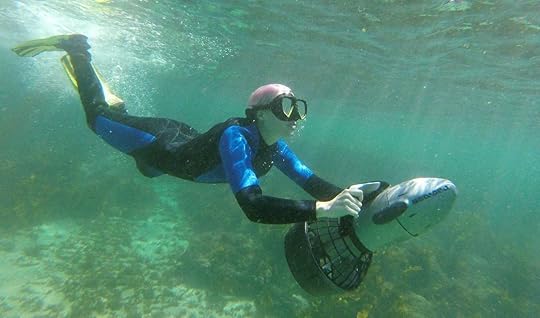
Although Australia’s Great Barrier Reef is undeniably worth seeing, it’s not the only underwater environment that you should consider checking out when Down Under. A scooter company is offering visitors a chance to see Sydney’s coast underwater. Operating in Gordon’s Bay, Sydney Underwater Scooters lets you explore Australia’s maritime world via James Bond-like, propeller-operated, mini-rockets, aka underwater scooters.
Take a guided, two-hour underwater tour in the Gordon’s Bay marine reserve. Your certified instructor will provide you with a diving mask, a quality wetsuit to keep you warm, thick diving boots to keep your feet safe from injury, and a personal scooter to propel you through the water. All you need to bring is a towel and sunscreen. Tours are suitable for swimmers of all levels from ages 16 to 75.
The bay itself is a protected reserve that is home to a variety of marine wildlife, including the eastern sea blue groper, octopus, and cuttlefish. Famous for its impeccable visibility, it’s Sydney’s only underwater nature trail.
Tours start at $115. To book, contact Sydney Underwater Scooters via its official website. 

More like this: 7 stunning underwater hotels you can actually stay in
The post Take an underwater scooter tour of Sydney’s coast appeared first on Matador Network.

12 best places to ski in Canada
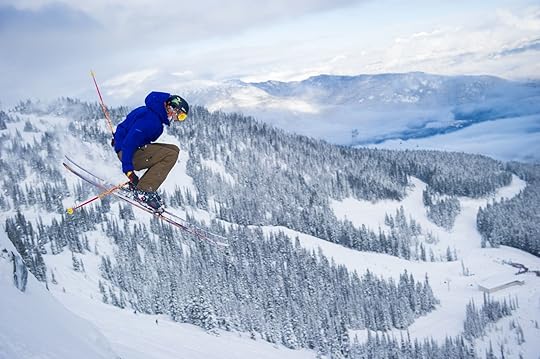
The 12 best places to ski in Canada
Photo: Mike Crane/Tourism Whistler
Canadians don’t hibernate. When winter comes (and stays), they get outdoors, skate on frozen lakes, snowshoe up mountains, scrunch through white forests, climb icy waterfalls, and hit some of the world’s best ski slopes. Warm fireplaces, great food, and end-of-day drinks also feature prominently on their winter activity list. Ready to join them?
Of all the ways to experience Canada’s cold-weather vistas — from the high, craggy Rockies to Québec’s ancient Laurentians — skiing might just be king. From the slopes of these 12 epic ski resorts and regions, winter is a paradise like you’ve yet to experience.

This post is proudly produced in partnership with the Canadian Ski Council.
The main draw at Whistler— besides its jagged mountain peaks, ice-blue glaciers, Pacific Northwest style, and impossible amount of skiable terrain — is its chill, continental feel. Canadian PM Justin Trudeau once taught snowboarding here…need we say more?
Beaucoup Canadian dollars have gone into the new lifts up the majestic twin peaks of Whistler and Blackcomb. The new 10-seater gondola rises from the base of Blackcomb and stops at the top of the mountain, next to the already famous PEAK 2 PEAK Gondola, the world’s highest. Skiing rarely gets more scenic than this.
Terrain highlight: Whistler gives you 8,171 acres of skiable terrain with 16 alpine bowls, three glaciers, and more than 200 runs. It’s basically its own powder universe.
Must-try dish: The burger at the hip Cure Lounge at Nita Lake Lodge is one of the best in town. Their fanciful, creative cocktails are also worth the five-minute jaunt from the Village. Après culture is nothing short of stellar here, and the food scene could stand on its own anywhere.
Top off-mountain experience: The purpose-built Whistler Sliding Centre is a remnant of the 2010 Vancouver Winter Olympic Games, now used by visitors who want to experience pressure several times their body weight pushing down on them at 75+ mph. No experience required, but the staff will put you through a guided training session at the before your run.
Photos provided by: Mike Crane/Tourism Whistler
Sun Peaks Resort
Same BC powder, smaller BC crowds. Yep, all that fresh quality eiderdown and those beautiful, gladed backcountry runs are just for you.
Sun Peaks Resort is 45 minutes from the city of Kamloops and is the closest interior-BC resort to the Vancouver area. That fact has helped lure young skiers and boarders to this ski-through village, most coming for the “all play and no work” philosophy. If you want to join the party, visit during Snowbombing Canada, a three-day music festival and ski blowout in April, held high in the Canadian Rockies.
Terrain highlight: Three connected mountains span a diverse 4,200+ acres of terrain. On a powder day, the deepest stuff will be in Gil’s.
Must-try dish: Take the Sunburst Express chairlift to mid-mountain as dusk falls for a memorable fondue dinner at the Sunburst Bar + Eatery.
Top off-mountain experience: Go for a ride in one of the resort’s snow groomers. The 45-minute evening tours will give you a chance to see how they carve the ski runs into their tiptop form. Book early!
Photos provided by: Tourism Sun Peaks
Big White Ski Resort
Most mornings, the premium champagne powder at Big White isn’t reserved for seasoned slope shredders at the top of the mountain — the fresh stuff is on the bunny hills, too. This is one of the most user-friendly (and family-friendly) resorts around, and it totally suits those I-want-everything-at-my-fingertips types.
Alternative activities are as plentiful as Big White’s famous snow: You can climb a 60-foot ice tower, gorge on the resort’s very own custom-designed chocolate from famous French chocolatiers, or take an evening sleigh ride through the lantern-lit village.
Terrain highlight: Ski among the gorgeous-but-eerie “snow ghosts” Big White is known for. The hoarfrost-covered trees look like old, bowed alpinists who’ve been frozen in place for hundreds of years.
Must-try drink: A flaming Gun Barrel coffee at Snowshoe Sam’s, a 30-odd-year institution at Big White. For this one, brandy-spiked coffee is set aflame with the help of an antique double-barrel shotgun.
Top off-mountain experience: How about the ultimate grownup off-piste activity: premium wine tastings (the resort is near one of Canada’s best wine regions)? Or get the best of all worlds by signing up for the resort’s Masters’ Week, which includes premium Big White skiing and après-wine-and-food tastings at choice local restaurants.
Photos provided by: Geoff Holman/Big White Ski Resort and Big White Ski Resort
Banff Sunshine Ski Resort
If you don’t come to Banff’s Sunshine for the four mountain faces, come for the heated, butt-warming chairlift — the first of its kind in Canada. Getting up to 9,000 feet has never been so comfortable.
Terrain highlight: On a sunny day, Insta-seekers head to the top of the Divide Chair for incredible views of Mt. Assiniboine, also known as Canada’s Matterhorn, towering above all the other pointy peaks.
Must-try dish: High tea in a castle. Fairmont Banff Springs is nicknamed Canada’s “Castle in the Rockies.” It’s straight out of a fairy tale, right down to its turrets and grand rooms.
Top off-mountain experience: Ride the gondola to the Verde Day Spa for a hot stone massage.
Photos provided by: Paul Zizka/Ski Big 3 and Ski Big 3
Kicking Horse Mountain Resort
Kicking Horse is a full glass of champagne powder. Regulars love its burly terrain and its bowls, ridgelines, and chutes — the most in North America. And the vibe? More low-key than just about anywhere — this resort practically feels like skiing in the backcountry.
Terrain highlight: The biggest new terrain expansion in North America this year is happening at Rudi’s Bowl — 660 more acres and an increase of vertical to 4,460 feet.
Must-try drink: Start the evening with a Caesar — Canada’s answer to the Bloody Mary — at Eagle’s Eye Restaurant. Ain’t nothin’ like diggin’ into an Alberta Angus Beef Ribeye steak 7,700 feet in the sky, either.
Top off-mountain experience: Sign up for an up-close learning session on local mountain creatures at the Northern Lights Wildlife Wolf Centre in Golden, a short drive from the resort.
Photos provided by: Pebleshoo/Resorts of the Canadian Rockies, Andrew Mirabato/Resorts of the Canadian Rockies, and Nick Nault/Resorts of the Canadian Rockies
The Laurentians, Québec
The Laurentians contain Québec’s most destination-y ski resorts, drawing people from all over the world for the province’s unique Europe-meets-North America vibe.
Mont Tremblant abuts a purpose-built, pedestrian-only alpine village that’s arguably the most bonafide holiday destination in the region. There’s a grand total of 102 trails on four slopes, many of them wide, groomed, and flat — perfect for beginners. Sommet Saint-Sauveur has some of Québec’s longest runs; it’s only 45 minutes from Montreal, and locals often come here to stretch their legs on weekends. Mont Blanc is a go-to resort for all levels of skiers and snowboarders, with the region’s second-highest peak, 41 trails, and 682 vertical feet.
Terrain highlight: The Versant Nord, or North Slope, is the locals’ secret at Mont Tremblant. All of its glades make for a great, challenging run.
Must-try dish: Poutine, of course (that’s crispy French fries doused in gravy and topped with squeaky cheese curds). It’s Québec’s glorious contribution to the cannon of comfort food.
Top off-mountain experience: Spa Scandinave, hidden in a forest outside Tremblant, is a welcome addition to the ski scene. You can give your muscles some TLC in a eucalyptus-infused steam room or sauna, sit under a warm waterfall, or take a short dunk in the freezing river.
Photos provided by: Tourism Québec/Tremblant, Tourism Québec, and Tourism Québec/Sommet Saint-Sauveur
Revelstoke Mountain Resort
Revelstoke is for serious powder-seekers. You can burn your thighs down the longest lift-serviced vertical in North America, but heli-skiing is probably the first thing that should come to mind when you think of this resort. Skiers from around the world consider Revelstoke the Holy Grail of this extreme sport and make the journey to breathe in this purest of mountain air and slide down these purest of untouched lines.
Terrain highlight: Revelstoke has the most vertical in North America: 5,620 feet. The longest run is a whopping 9.5 miles, dropping from the top of Mount Mackenzie to Mackenzie Avenue, in the heart of Revelstoke’s village. Start training!
Must-try dish: The Village Idiot is an iconic après hangout. They’ve mastered the art of the tried-and-true pizza/beer/patio/live music combination. Try the Southwest Vegetarian!
Top alternative experience: Heli-skiing! Beyond that, sign up for the First Tracks program. It’ll let you hop the lifts and get onto the corduroy 45 minutes before the general public.
Photos provided by: Ian Houghton and Royce Sihlis
Lake Louise Ski Resort
You’ll find Lake Louise insiders at the Back Side, where lines are lean and snow is plentiful. This resort has everything you could wish for: jaw-dropping views, steep shots, wind-loaded pockets, iconic cliff drops for expert riders, and green and blue runs from every lift for shier ones. The ice castles on the frozen turquoise lakes barely make the brochure.
Terrain highlight: Drop into any of the Back Side bowls for a powder day you’ll remember for the rest of your life.
Must-try drink: Grab a drink crafted from Banff’s pristine, glacier-fed waters at Banff Ave Brew Co. or Park Distillery.
Top off-mountain experience: If you get the opportunity to skate on frozen Lake Louise before snow falls, the ice should be crystal clear — but you’ll likely still see fish swimming beneath you.
Photos provided by: Reuben Krabbe/Ski Big 3 and Ski Big 3
Fernie Alpine Resort
If we had to narrow down the things Fernie is famous for to one, it’d have to be the bowls: five epic amphitheatres strung together, all full of awesome, airy, deep, blinding-white snow. Hell, even face-plants at 30mph are kind of fun in a place with powder like this.
Terrain highlight: The Currie Bowl “rope drop” is a Fernie favorite. Extreme riders gather at the top of the bowl, waiting for the ski patrol to drop the rope to signal open access to that steep, steep Currie Powder after a proper dump.
Must-try drink: Griz Bar’s (named after the Griz, a local legend) offers the “Mogul Smoker,” a blend of Appleton’s Estate VX rum, Kahlua, coffee, and hot chocolate, topped with whipped cream. It’s the ultimate après warm-up.
Top alternative experience: A Winter Sports School ski touring expert from the resort can lead you up a designated run, with equipment that allows you to glide uphill.
Photos provided by: Robin Siggers/Resorts of the Canadian Rockies and Henry Georgi/Resorts of the Canadian Rockies
The Eastern Townships, Québec
The mountains of the Eastern Townships offer consistently good snow and uncrowded, well-maintained trails. Beyond the basics, there’s showshoeing, plenty of mountain eye candy, great food, and a straight-up cool après scene.
Bromont is probably best known for its night skiing — 97 of its 114 trails are lit. Sutton is Montreal’s beloved close-to-home mountain. It’s well-priced, charming, and famous for trails that are a mix of glades and narrow runs. Owl’s Head is spectacularly scenic, with beautiful vistas overlooking shimmering Lake Memphremagog. And Mont Orford, in Parc National du Mont Orford, has 50+ trails and glades and an impressive vertical drop of 1,933 feet over three mountains.
Terrain highlight: The Alleghanys run at Sutton is great for beginners/intermediates looking to level up. It starts at the top as a blue and traces the shoulder of the ridge, becoming a green about halfway down.
Must-try dish: Definitely get your palate on some locally sourced roast Brome duck magret with balsamic and maple sauce at Hotel Chéribourg, near Mont Orford.
Top off-mountain experience: Torch-lit nighttime snowshoeing might change your life. Splurge on some chocolate fondue around the campfire at Mont Orford’s Le Cerisier Visitors Centre when you return.
Photos provided by: A. Daniel/Tourism Québec and Tourism Québec
Mt. Norquay Ski Resort
At a mere five minutes away, Mt. Norquay is the closest mountain to the town of Banff, and it’s where you’ll find the locals sneaking up the Big Chair in search of first tracks. Once you get to the top, there’s views for days.
Terrain highlight: Norquay’s mixed Terrain Park was designed for freestyle noobs as well as more experienced park-riders.
Must-try dish: Play James Bond in the very retro Cliffhouse Bistro on the mountain, off the North American Chair. Try a locally focused cheese or charcuterie plate and, of course, note the view.
Top off-mountain experience: Norquay Tube Park after dark. It features a snow tube magic carpet and eight long sliding lanes with significant drop.
Photos provided by: Reuben Krabbe/Ski Big 3 and Ski Big 3
Québec City Region
No car? Pas de probléme. A shuttle service from downtown Québec City can get you to some of the region’s best ski stations.
Mont-Sainte-Anne has lots happening on three sides of the mountain, including 71 trails, fun terrain parks, and gorgeous glades with fairytale names like Le Forêt Noire. The setup at Massif de Charlevoix wastes no time — the parking lot is at the top of the mountain. Get out of the car, clip into your skis, and point them downward to the village. Stoneham is only a 20-minute drive from downtown, with many locals grabbing their skis and heading there after punching out of work for the day.
Terrain highlight: Mont-Sainte-Anne’s FIS-recognized La Crete race trail runs the summit with fantastic views and a sustained 40-degree pitch.
Must-try dish: Don’t miss out on the foie gras from the nearby Ferme Basque at La Ferme Hotel’s Restaurant Les Labours, in Baie-Saint-Paul.
Top off-mountain experience: Ice canyoning. You’ll rappel down frozen waterfalls in Mont-Sainte-Anne. Go as fast or as slow as you like.
Photos provided by: ean Sebastian Chartier-Plante/Tourism Québec, Tourism Québec, and Benjamin Gagnon/Tourism Québec

This post is proudly produced in partnership with the Canadian Ski Council.
The post The 12 best places to ski in Canada appeared first on Matador Network.

November 9, 2018
Where to go to reconnect with nature
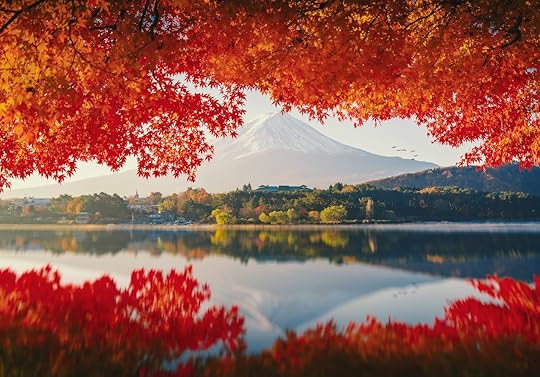
Fresh air, wide-open landscapes, and the sound of, well, nothing. We’ve all been told how getting outdoors is good for us, but it’s not just our physical health that it benefits. Just five minutes of outdoor activity — even just walking — can help boost mood and self-esteem, and contact with nature has been linked to reductions in stress, depression, and anxiety.
Yet these days, it seems we’re more reluctant than ever to switch off. Eighty-four percent of US citizens live in urban areas, the average person spends 24 hours a week online, and rapidly improving WiFi and mobile connections are making it more and more difficult to find places where it even feels possible to unplug from the matrix of modern day life.
As a result, we’re missing out on some of the best views, experiences, and remote destinations nature has to offer — not to mention the invaluable opportunity to unwind and mentally recharge.
Here are 10 of the best destinations where it’s possible to do just that.
1. Shetland Islands, Scotland
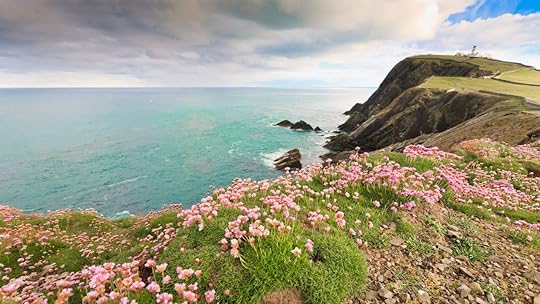
Photo: aiaikawa/Shutterstock
The northernmost point of Scotland, the Shetland Islands include 15 uninhabited islands among the hundreds that make up the subarctic archipelago, making it easy to escape civilization. Here, long walks, bird-watching, and making daisy chains have recently begun being prescribed by doctors to treat chronic illnesses. In a place where it’s still possible to lose yourself among vast moorlands or have a whole beach to yourself, it’s easy to see why.
Of course, the islands’ location just 400 miles south of the Arctic Circle means you’ll have to brave the cold if you want to visit outside of the “warmer” summer months — July is the hottest month with an average temperature of 54°F — but a winter visit is well worth the effort. Not only is January when the islands are at their most windswept and rugged, but it’s also when the annual festival of Up Helly Ya takes place, durinw which Vikings taking over the town and ultimately burn a longship to celebrate the islands’ Scandinavian heritage.
2. Northern Patagonia, Argentina
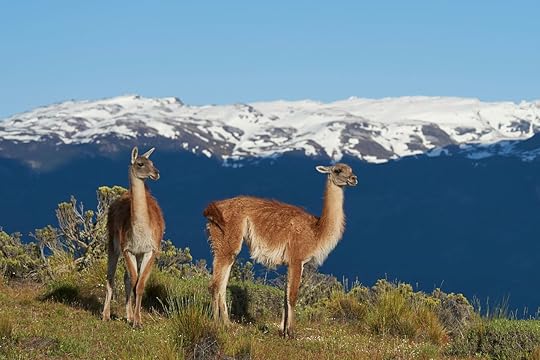
Photo: JeremyRichards/Shutterstock
Straddling Chile and Argentina, Patagonia in South America is as sparsely populated as it is vast. Its distinct geography has put Southern Patagonia on the map as a hiking destination, with Chile’s spectacular Torres del Paine National Park attracting travelers from all over the world.
However, while it’s still possible to go “into the wild” in Southern Patagonia, the less frequently visited Northern Patagonia has been a rugged, remote secret for most of its history. In many places here, tourism is non-existent, meaning that it’s still possible to explore areas of natural beauty without having to dodge other travelers’ selfie sticks. Bariloche and the Lake District, in particular, are where you’ll find some of Argentina’s most stunning landscapes, as well as plenty of opportunities for climbing, trekking, and skiing in winter.
3. Great Australian Bight, Australia

Photo: opailin/Shutterstock
With only 10 percent of its land actually habitable, Australia has a lot of space, and the Great Australian Bight is no exception. This massive ocean bay is 720 miles long and sits astride the border between South Australia and Western Australia. It also includes the Nullabor Plain, a semi-arid area of nothingness four times the size of Belgium.
Not only is the Bight one of the few places on Earth where you’re guaranteed to be truly alone — without even phone signal for the company — but between June and October, it’s also home to one of the planet’s most incredible natural phenomenon. Every year, Southern Right Whales migrate thousands of miles here from Antarctica to mate and calve near the cliffs at the Head of the Bight.
A truly humbling sight, it’s a stark reminder of just how small and insignificant the human race is in comparison to nature. But with big oil companies investigating fracking opportunities in the area, its days could be numbered, which is why several organizations have joined together to form Fight for the Bight and campaign for the Great Australian Bight to become a protected marine environment.
4. The Galápagos Islands, Ecuador

Photo: Jess Kraft/Shutterstock
Most famous for their impact on naturalist Charles Darwin, inspiring his Theory of Natural Selection, the Galápagos Islands were formed millions of years ago by a chain of volcanic eruptions. Yet even now, only five of the islands are inhabited by a population of fewer than 30,000 people. Or, put differently, more Galapagos sea-lions live on the islands than humans.
But, unlike some of the other destinations on this list, the islands’ sparse population and remote location aren’t their main attractions. Rather, they offer a rare opportunity to be surrounded by weird and wonderful wildlife. Whether you visit one of the islands’ deserted plains or go on a boat trip between their beaches, you’ll find yourself outnumbered by countless species, from giant tortoises to 45 different species of bird, the majority of which are unique to the islands’ ecosystem.
5. Lofoten Islands, Norway

Photo: David Varga/Shutterstock
Remote, rugged and ridiculously beautiful, a quick Google of “things to do on the Lofoten Islands” will tell you everything you need to know about life on this archipelago off the northwestern coast of Norway and its reverence for nature. The islands lie within the Arctic Circle. Depending on the season, the main tourist activities are biking, hiking, skiing, sailing, snowshoeing, kayaking, diving, riding, surfing and, of course, fishing — the traditional source of income for locals.
All of the above offers ample opportunity to experience the mountainous fjords and craggy coastline alike, but you don’t have to be an adrenaline junkie to reconnect with nature here. In fact, with Northern Norway often revered as one of the best places in the world to see the stunning spectacle of the aurora borealis, in winter, all you need to do is look out of the window at night and, hopefully, you’ll see the northern lights blazing across the sky.
6. Westfjords, Iceland

Photo: ronnybas frimages/Shutterstock
Surrounded by high, steep mountains; approached only by narrow roads; and concealing a third of the country’s coastline coiled and curled around its crags and fjords, Iceland’s Westfjords Peninsula is a maze of tumbling waterfalls, golden beaches, and perilously high cliffs. It’s a place where you can truly feel as if you’re walking out towards the edge of the Earth. Just visit Látrabjarg, Europe’s westernmost promontory, and walk out beneath the millions of birds that call it home.
Alternatively, if risking a run-in with particularly aggressive puffins isn’t your thing, Westfjords also offers a more comfortable way to get in touch with nature. There are several natural geothermal springs in the area, including the Pollurinn springs just outside the village of Tálknafjörður. These pools can hit temperatures of up to 114°F and are a prime viewing location for sunset over the mountains of the Tálknafjörður fjord.
7. Lake Kawaguchiko, Japan

Photo: FocusStocker/Shutterstock
Looking out over the serenity of Lake Kawaguchiko, it’s hard to imagine the bustling city of Tokyo a mere two-hour bus journey away. The sprawling town sits in the shadows of Mount Fuji with a distinct hiking-base-camp feel to it that’s worlds away from the nearby metropolis. Ok, so it’s not a small town, but as well as being far less popular with tourists than nearby Hakone, it’s easy to find areas of unspoiled nature nearby. You just need to know where to look.
The easiest way to get away from the town itself is to take the Tenjō Ropeway cable car to the top of Mount Tenjō. This is the starting point for several trails, as well as where you’ll find a viewing point for Mount Fuji, although this can get crowded with tourists. For the best views, take to the trails in the early morning when Mount Fuji is most likely to be visible or get the cable car up at sunset and walk down the mountain trail into the town, enjoying the peace and quiet and soaking up the view of the sunset on the lake.
8. Northern Kerala, India

Photo: DR Travel Photo and Video/Shutterstock
While the image of a houseboat floating dreamily along the backwaters of Kerala is probably familiar to most travelers, it’s surprisingly easy to find calm and tranquility along Northern Kerala’s quieter straights. Away from more popular destinations like Alappuzha and Kochi, boat trips along these quieter backwaters offer views of the world slipping by without hordes of other travelers in the picture — and are a gateway to an unexplored paradise.
One specific backwater that is less frequently visited is the Kavvayi Kayal. It’s home to the golden beach of Valiyaparamba, a huge range of different flora and fauna, and a rich history stretching as far back as Marco Polo. The backwaters here are fascinating, serene, and a bit too far off the beaten track for many people to bother visiting. Consequently, compared to Southern Kerala’s more popular backwaters, they remain less-commercialized and cheaper to explore.
9. The Aleutian Islands, Alaska
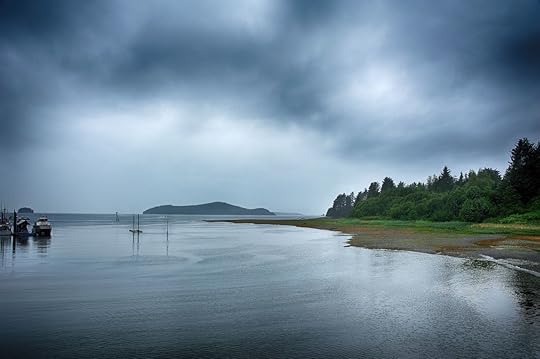
Photo: Lorna Wu 2/Shutterstock
Accessible only during summer, when the MV Tustumena ferry makes just eight trips to the archipelago, the Aleutian Islands are remote even for Alaska, the least densely populated state in the US. If you manage to make it here, you’ll be greeted by the sight of towering submarine volcanoes rising out of the ocean, vast stretches of green tundra, and a coastline as treacherous as it is beautiful.
However, the sight of your destination isn’t all that makes this journey worthwhile. Venturing through some of the most remote spots on the planet, the ferry stops in Kodiak, where the Barometer Mountain trail leads to a jaw-dropping view over the ocean and the hardy port of Cold Bay, where a population of just over a 100 people maintain their community spirit with traditions like the annual Silver Salmon Derby before it reaches its final destination of Dutch Harbor.
10. The Sahara Desert, Morocco & North Africa

Photo: Anton Petrus/Shutterstock
The Sahara Desert might sound like the last place to visit if you want to reconnect with nature, conjuring up images of rolling sand dunes where little grows and even less survives. It’s a misconception. Rather, the remoteness of the Sahara is where you can have some of the most extraordinary natural experiences on Earth — whether that’s looking up at unimaginably clear, starry skies from Merzouga on the outskirts of the Erg Chebbi desert or visiting the oasis of Figuig, where date palms rise out of the desert and loom over the town’s residents.
Yet in this part of the world, where water is in short supply, to say the least, it’s the people who live here who are actually more remarkable than their surroundings. They build their lives around nature rather than the other way around. With a way of life dating as far back as the original Berbers, the desert’s few inhabitants live their lives according to the whims and changeability of nature. So, if you want to really reconnect with nature, take note. 

More like this: 9 silent retreats around the world to take if you hate talking to people
The post 10 remote destinations to visit to really reconnect with nature appeared first on Matador Network.

Matador Network's Blog
- Matador Network's profile
- 6 followers



